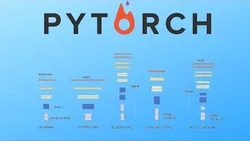
iptables Complete Guide HackerSploit Linux Security 
This guide provides an in-depth look at iptables, a Linux-based firewall. It covers topics such as tables and chains, packets and targets, installing and building commands, listing and deleting rules, and blocking or allowing connections to ports. It also explains how to save and flush rules, as well as how to use iptables for NAT and port forwarding. ▼
ADVERTISEMENT
Course Feature
![]() Cost:
Cost:
Free
![]() Provider:
Provider:
Youtube
![]() Certificate:
Certificate:
Paid Certification
![]() Language:
Language:
English
![]() Start Date:
Start Date:
On-Demand
Course Overview
❗The content presented here is sourced directly from Youtube platform. For comprehensive course details, including enrollment information, simply click on the 'Go to class' link on our website.
Updated in [February 21st, 2023]
Unlock the Exciting World of Learning! Here's What Awaits You: With the iptables Complete Guide HackerSploit Linux Security course, you can learn the fundamentals of iptables and how to use it to secure your Linux system. You will learn about tables and chains, packets and targets, and how to install, build, list, delete, block, and allow connections to ports. You will also gain an understanding of the syntax and be able to save and flush rules. With this course, you will be able to confidently use iptables to protect your Linux system from malicious attacks.
[Applications]
After completing this course, users are encouraged to apply the knowledge they have gained to their own Linux systems. They can use iptables to secure their systems by blocking or allowing connections to ports, as well as saving and flushing rules. Additionally, users can use the syntax recap to review the commands they have learned and practice building iptables commands.
[Career Paths]
1. Network Security Engineer: Network Security Engineers are responsible for designing, implementing, and maintaining secure networks. They must be knowledgeable in the latest security protocols and technologies, and be able to identify and mitigate potential threats. With the increasing demand for secure networks, this job position is expected to grow in the coming years.
2. Cyber Security Analyst: Cyber Security Analysts are responsible for monitoring and analyzing network activity to identify potential threats and vulnerabilities. They must be able to develop and implement security policies and procedures, and be knowledgeable in the latest security technologies. This job position is expected to grow as organizations become increasingly reliant on digital technologies.
3. Security Architect: Security Architects are responsible for designing and implementing secure systems and networks. They must be knowledgeable in the latest security protocols and technologies, and be able to identify and mitigate potential threats. This job position is expected to grow as organizations become increasingly reliant on digital technologies.
4. Security Administrator: Security Administrators are responsible for managing and maintaining secure systems and networks. They must be knowledgeable in the latest security protocols and technologies, and be able to identify and mitigate potential threats. This job position is expected to grow as organizations become increasingly reliant on digital technologies.
[Education Paths]
1. Bachelor of Science in Computer Science: This degree path provides students with a comprehensive understanding of computer science fundamentals, including programming, software engineering, and computer architecture. It also covers topics such as artificial intelligence, machine learning, and data science. This degree is becoming increasingly popular as technology continues to evolve and become more integrated into our lives.
2. Bachelor of Science in Cybersecurity: This degree path focuses on the security of computer systems and networks. It covers topics such as cryptography, network security, and digital forensics. As cyber threats become more sophisticated, this degree is becoming increasingly important for those looking to protect their data and systems.
3. Master of Science in Information Security: This degree path focuses on the security of information systems and networks. It covers topics such as risk management, security architecture, and incident response. This degree is becoming increasingly important as organizations look to protect their data and systems from malicious actors.
4. Master of Science in Computer Science: This degree path provides students with a comprehensive understanding of computer science fundamentals, including programming, software engineering, and computer architecture. It also covers topics such as artificial intelligence, machine learning, and data science. This degree is becoming increasingly popular as technology continues to evolve and become more integrated into our lives.
Course Provider

Provider Youtube's Stats at AZClass
Discussion and Reviews
0.0 (Based on 0 reviews)
Explore Similar Online Courses

EfficientNet from scratch in Pytorch

Chess Classics You must Know Ep 25 Sultan Khan vs Capablanca 1930 Genius!

Python for Informatics: Exploring Information

Social Network Analysis

Introduction to Systematic Review and Meta-Analysis

The Analytics Edge

DCO042 - Python For Informatics

Causal Diagrams: Draw Your Assumptions Before Your Conclusions

Whole genome sequencing of bacterial genomes - tools and applications

Introduction to Linux : Full Course for Beginners

The 50 Most Popular Linux & Terminal Commands - Full Course for Beginners


Start your review of iptables Complete Guide HackerSploit Linux Security